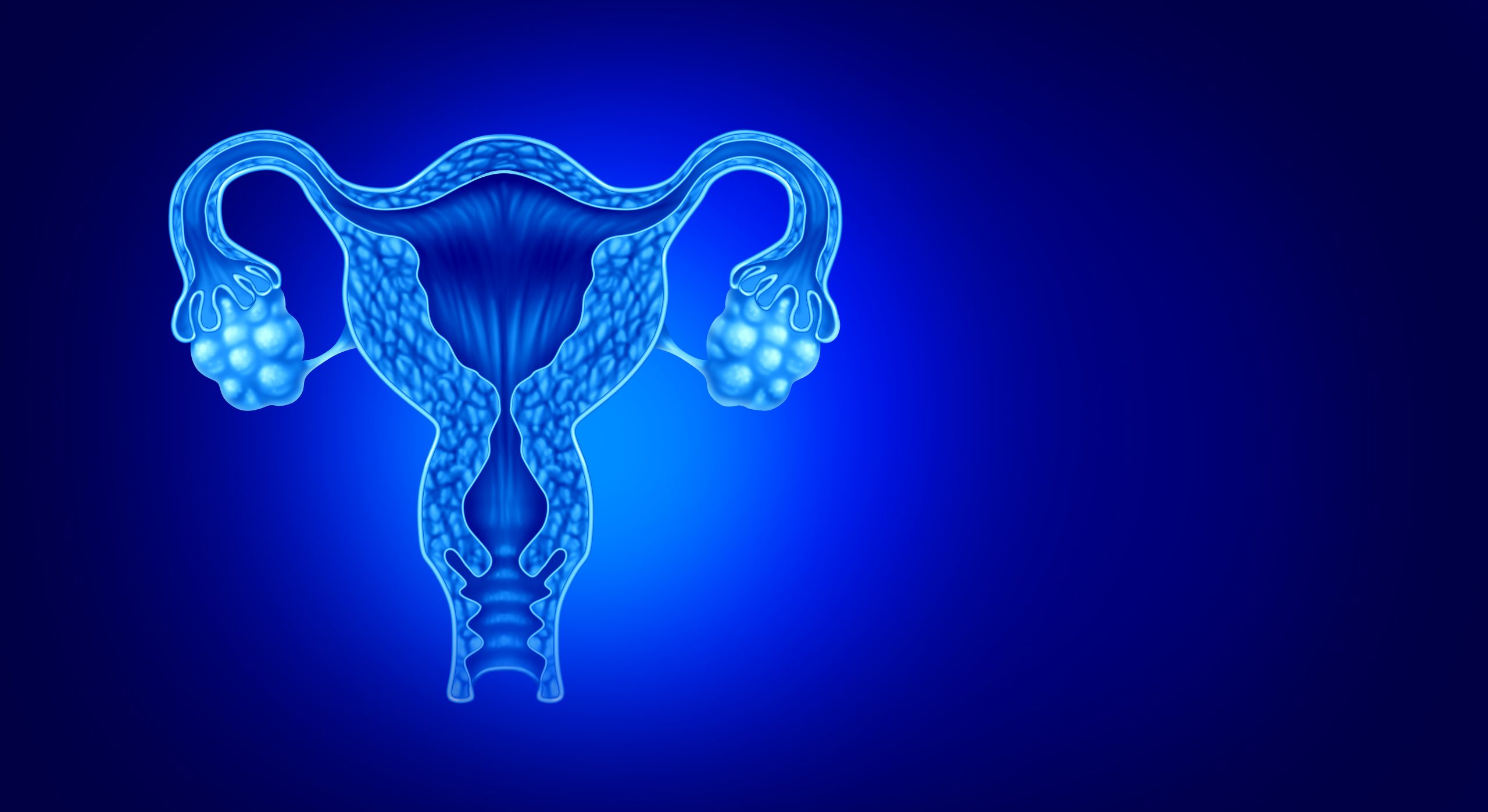IVF with Endometriosis: Everything You Need to Know
This article presents general statistics about IVF success rates to thoroughly discuss and elaborate on IVF with Endometriosis. The success rates presented are derived from relevant and cited journal articles and are not representative of CNY Fertility’s own clinic data. To view CNY Fertility data, please visit the SART or CDC website.

Endometriosis is a condition in which endometrial tissue (tissue that is supposed to grow in the uterine lining) grows outside of the uterus. Endometriosis is thought to impact 10-15% of reproductive-age women but is much more prevalent in women with infertility. Approximately 25-50% of infertile women may be affected by endometriosis, and 30-50% of patients with endometriosis may suffer from infertility.
Because of endometriosis’ profound effect on female fertility, many women experiencing this condition turn to IVF to grow their family. In fact, around 10% of all IVF cycles are indicated due to an endometriosis diagnosis – though the real number may be much higher due to the prevalence of “silent endo.”
But just how effective is IVF for women with endometriosis? Are there actions you can do before your IVF treatment or specific protocols that can improve your chances for a successful pregnancy through IVF when diagnosed with endometriosis? This article will explore just that and more.
How Endometriosis Causes Infertility
Endometriosis is a condition that causes tissue similar to the uterine lining to grow outside the uterus, in the abdominal cavity. Endometriosis can be found in the ovaries, fallopian tubes, pelvis, and surrounding organs.
Endometriosis may cause painful periods, sexual intercourse, bowel movements, and chronic pelvic pain in general. The presence of endometriosis can make getting pregnant challenging, even when none of these other symptoms are present—a condition known in the world of fertility as “silent endo.”
Conceiving naturally with endometriosis can be challenging because it causes widespread inflammation throughout the reproductive organs. This inflammation can impair egg development, sperm function within the female’s reproductive tract, egg function, and implantation of the embryo in the uterus. Another challenge is that endometrioses can reduce the number of available eggs.
As a result, while the natural conception rate is about 10-20% per month for those without endometriosis, it drops to 1-10% for those with endometriosis.
Diagnosing Endometriosis Prior to IVF
Diagnosing endometriosis can be difficult as many cases are without symptoms (other than infertility) and may require a surgical procedure to diagnose.
Currently, diagnosis of endometriosis requires a surgical procedure called laparoscopy to evaluate and potentially treat endometriosis adhesions.
Less-invasive tests like ReceptivaDx detect uterine inflammation (often indicative of endometriosis) and may be a reasonable alternative for some. The inflammatory marker BCL6 is found in more than 50% of women with unexplained infertility and 65% of women with two or more IVF failures.
Many individuals are unaware they have endometriosis until they experience infertility issues. This “silent endometriosis” may be misinterpreted as unexplained infertility until a laparoscopy or ReceptivaDx test is performed.
Due to how common silent endometriosis is and the impact it can have on IVF success, screening for endometriosis before an IVF cycle and/or after a failed cycle prior to moving on to the second or third IVF cycle may be a prudent treatment choice.
How is endometriosis treated in the context of IVF?
If endometriosis is known or suspected, it is usually treated by hormone therapy suppression or surgical (laparoscopy) prior to egg retrieval or between retrieval and transfer.
IVF Success Rates with Endometriosis
Though studies examining the rates of IVF success for women with endometriosis have found mixed results, the consensus is that overall IVF success rates (1-3 retrievals with 3-6 transfers) vary according to the stage of the condition :
- Stage I or II Endometriosis: Approximately 67.7% after 1-4 IVF cycles.
- Stage III or IV Endometriosis (Severe): Approximately 56.7% after 1-4 IVF cycles. Severe endometriosis tends to result in lower clinical and ongoing pregnancy rates per embryo transfer compared to those without the condition.
IVF Success Rates for Untreated vs Treated Endometriosis
For women with untreated endometriosis, one study found a live birth rate of 27.7%. In contrast, those who received treatment in the early stages of disease progression had a live birth rate of 43.6%, and those in the later stages had a rate of 46.3%.
A meta-analysis of four studies comparing the reproductive outcomes in women with infertility and deep infiltrating endometriosis, who received IVF with or without a previous surgery, revealed that patients who had surgery before IVF had significantly higher pregnancy and live birth rates than those who did not. Specifically, the pregnancy rate per patient and cycle was 1.84 times higher, and the live birth rate per patient was 2.22 times higher for operated patients.
Best IVF Protocols for Endometriosis
Endometriosis is a complex condition that can contribute to infertility in many ways. For these reasons, there is no “best protocol.” The best path forward is through close consultation with a trusted fertility care provider.
That said, there are two common treatments.
Pre IVF Treatment with Hormone Therapy (GnRH Antagonist GnRH Antagonist Protocol) and Aromatase Inhibitors
This protocol involves the use of GnRH antagonists to prevent premature ovulation during ovarian stimulation.
Studies have shown that pre-IVF treatment with gonadotrophin-releasing hormone (GnRH) for 3-6 months significantly improves clinical pregnancy rates compared to those who do not receive this treatment.
Using aromatase inhibitors like letrozole in combination with other hormonal treatments may help reduce estrogen production driving endometriosis, thereby reducing the size of endometriotic lesions, while improving the ovarian response and occyte production during IVF.
Frozen Embryo Transfer (FET)
For some women with endometriosis, performing a frozen embryo transfer (FET) in a subsequent cycle rather than a fresh transfer can improve implantation rates and pregnancy outcomes. This approach allows time for the endometrial environment to recover from the stimulation phase.
Surgical Treatment
Laparoscopic surgery to remove endometriotic lesions before starting IVF (Specifically the transfer phase) can improve pregnancy rates, especially in women with advanced stages of endometriosis.
Do IVF drugs make endometriosis worse?
It is possible that increased levels of estrogen due to medications used in IVF may temporarily worsen endometriosis.
However, if endometriosis is known or suspected, part of that patient’s IVF protocol often includes a suppression medication for 30-90 days prior to any transfer attempts if no surgery has been performed in the last 6 months.
Can IVF cause endometriosis?
No, IVF does not cause endometriosis. If not detected prior to IVF treatment, some medications may temporarily trigger symptoms of endometriosis. However, as we mentioned above, there are effective protocols for suppressing these symptoms.
How is the IVF process different for Endometriosis Patients?
Women with confirmed or suspected endometriosis typically go through the same process for IVF, with one notable difference: Most women with endometriosis either have surgery or are put on a medication protocol that suppresses endometriosis prior to the ovarian stimulation phase of IVF or before a Frozen Embryo Transfer.
Sample 1: IVF Timeline for Endometriosis:
- For endometriosis patients:
- Endometriosis suppression protocol: Oralissa (or Lupron) for 30-90 days or
- Laparoscopic surgery
- Ovarian stimulation with medication
- Fertilization and embryo development in a lab
Sample 2: IVF Timeline for Endometriosis
- Ovarian stimulation with medication
- Fertilization and embryo development in a lab
- For endometriosis patients:
- Endometriosis suppression protocol: Oralissa (or Lupron) for 30-90 days or
- Laparoscopic surgery
- Frozen Embryo transfer
While these changes extend the timeline of IVF, hormonal suppression or surgery is often encouraged as it increases the chance of implantation and subsequent pregnancy rates.
IVF with Endometriosis Success Stories
At CNY, we’ve helped thousands of clients with endometriosis successfully grow their families. Here are just a few of our client success stories.
IVF with Endometriosis: The Takeaway
Endometriosis is a chronic condition that causes tissue similar to the uterine lining to grow outside the uterus, often resulting in pain and infertility. An estimated 30-50% of women with endometriosis face infertility. For those struggling with this condition, in vitro fertilization (IVF) can be an effective treatment.
While the natural conception rate for women with endometriosis is notably lower, IVF success rates vary by the severity of the condition. Notably, hormone therapy with GnRH Antagonists (like Oralissa) or Aromatase Inhibitors (like Letrozole) for 30-90 days prior to the start of IVF or a Frozen Embryo Transfer – amongst other treatment considerations like surgery can enhance IVF outcomes.
Despite potential challenges, individualized IVF protocols offer hope for women with endometriosis to achieve successful pregnancies.

